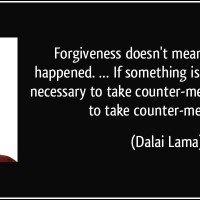Yesterday’s post on family violence and the middle class drew some criticism, in one instance culminating in me being described as a troll, and my point of view as “stupid, sigh” by the male who didn’t agree with it, or the fact that I wouldn’t back down from it. I find that patronising sigh interesting, given that we were discussing gender imbalance and middle class abuse. I’ve noticed lately on social media that if I politely persist in addressing areas of disagreement, abuse almost inevitably results: apparently there comes a point in discussion with some middle class men where if a woman doesn’t capitulate her position is stupid, sigh. A clever woman knows when to shut her mouth, perhaps?
I’ve used as my source for the argument against using class as a determinant in the family violence debate this government document titled Domestic, family and sexual violence in Australia: an overview of the issues, compiled in October 2014.
Quote:
In Australia, domestic, family and sexual violence is found across all cultures, ages and socio-economic groups, but the majority of those who experience these forms of violence are women. However, it is not possible to measure the true extent of the problem as most incidents of domestic, family and sexual violence go unreported.
Risk factors:
As discussed earlier, domestic, family and sexual violence occurs across all ages, cultures and socio-economic groups.[27] However, research shows that some women are at greater risk of experiencing these forms of violence than others.[28] For example, exposure to child abuse or violence as a child, alcohol or drug dependency issues, financial or personal stress and lack of social support are all strong correlates of violence against women.[29] Some women are also more vulnerable to violence, or less able to leave violent relationships, based on factors such as age, Indigenous status, location, disability, ethnicity, and English language ability.
None of these risk factors are peculiar to any particular class, yet it’s far from unusual for such risk factors to be presumed to be indicators of class.
The face of Australian family violence for the last twelve months was Rosie Batty, whose son, Luke, was horribly and publicly murdered by his father. Ms Batty is a middle class woman. Indeed, a woman who was unable to perform the middle class expectations of that role would never have been appointed in the first place. I don’t recall Ms Batty framing family violence as a class issue: far from it, it seems to me she at all times focused on violence against women and children, regardless of class.
I suspect that a focus on class in the family violence debate draws attention away from the far more threatening perspective of family violence as an issue of gender inequality. Far easier for the middle classes, males in particular, to distance themselves from gender inequality if its most violent manifestation is said to occur in demographics other than their own.
As long as family violence is associated with the shame and othering of what is perceived as *welfare class* behaviour, middle class women and children will continue to remain largely silent on what happens to them in their homes.
I also do not and will not accept the stigmatisation of low-income, poor and Indigenous people in the matter of family violence as a class issue.
As a woman explained to me today, her middle class status changed overnight when she reported some twenty-five years of family violence to police. The consequences of reporting saw her lose that status, and become a member of the *underclass.* How would I be represented in the statistics, she asks. How indeed.
Women and children who leave violent relationships frequently suffer financially and socially, as well as running a high risk of further injury and even death at the hands of the perpetrator.
Assistance, protection, legal help and sanctuary should be available for every woman and child who is a victim of family violence, regardless of class and any other consideration. When services are being increasingly withdrawn by the LNP government, either directly or through reduced funding to the states, it seems rather ludicrous to be quarrelling about the class to which victims belong.
I don’t buy the argument that establishing the class of victims allows policy makers to best direct funding. As the cited overview states, those who experience family violence are predominantly women, and it is impossible to measure the true extent of the problem as most incidents go unreported. Were adequate services available, women would be enabled to report. We might then see what place class has in family violence.
What is indisputable is that it is women who are most urgently in need of assistance, and that the problem is at its source one of gender inequality and not class, though class certainly has an effect on reporting, and perception.







































It’s reasonable to assume that most people who manage, talk about or otherwise are involved in issues of violence towards women will come from the middle class. This would be particularly true for policy makers and those with a ‘voice’ to influence. There is a common psychological phenomenon that has to do with social identity. Humans like to make themselves more like the group they are in (or even think they are in) and less like other groups. It makes us feel more secure. It is more complex than this but the idea is fairly simple.
So, it makes sense that middle class commentators and the head nodders that listen to them would play the ‘not in my social class’ card and put the blame on other groups-the marginalised and so on. Understandable but inexcusable and this ‘card’ needs to be exposed. One would expect that intelligent commentators would do their research on this sort of bias.
When it comes to men, who are the main perpetrators in violence I guess that the slight of hand is in blaming the victim. If they can point to drug addiction, the sex business, low income, alcohol abuse and so on as the causes then they move the pointing finger away from them.
Again, I am horrified but not surprised that you are getting abused and/or patronised by very threatened men with very fragile egos. Another feature of blaming the victim.
Stay strong.
LikeLiked by 5 people
Thanks for that perspective, Stewart. Remind me to tell you who it was when we all get home again. 🙂
LikeLike
Email me. And let me reply to these scumbags male to male-we have a way of doing this that you gals don’t understand. Men’s business:))
LikeLiked by 1 person
No! That would be wrong in so many ways…but I appreciate the offer. 🙂
LikeLike
I’d simply say the male was ‘a bit slow’ Jennifer, please don’t worry about it. DV is a huge problem in Australia, my wife came to me from a ‘battered’ marriage. We went on holiday once to where her ex lives and I was going to see how brave he was against a man who would hit back, but sadly he was also on holidays.
LikeLiked by 1 person
It was probably just as well….
LikeLiked by 1 person
“As a woman explained to me today, her middle class status changed overnight when she reported some twenty-five years of family violence to police. The consequences of reporting saw her lose that status, and become a member of the *underclass.*”
Just the point I was making on the previous thread. Women (usually) are trapped into abusive relationships by the consequences of leaving them. Often a person will assess that he or she will be better off accepting the risk of violence and the likelihood of pain over the certainty of loss of status, loss of income and loss of ‘face’. And who is to judge whether such a choice is poor or unacceptable? Surely each person must decide for him or herself.
LikeLiked by 1 person
Doug, I understand this and I think this is a make perspective on the whole in that you are assuming some level of real choice is possible. Surely if we understand DV then the system (the male system) will enable the woman not to lose anything at all. In other words the woman has a real choice-right now this is not the case. It’s not even a real choice to report it. And it should be.
LikeLiked by 2 people
It is not “a real choice” whatever that means. It is not a choice between strawberries and raspberries, but between two evils.
It is just such choices that people face in life. Out there in the real world the choice may be between fleeing an invading army and staying in your home to risk the conqueror’s treatment. It may be a choice between invasive surgery and chemotherapy; it may be a choice between spinal surgery and continual pain. Or even between living in pain or ending it all.
Are these not “real choices”?
LikeLike
I’ve always taken the view that people can only make choices if they have options. And seeing the options is not so easy as it sounds. One doesn’t know what one doesn’t know and the psyche is good at illusions and self-deception in all sorts of ways. Much of my life’s work has been involved in helping people understand the options, to be aware of them and then they can make choices.
LikeLiked by 1 person
You “liked” your own post? (3.36pm, above)
That’s a good trick!
By all means help them explore the options.
LikeLike
One can find themselves so beaten down, they see no options. Sadly this can be true.
LikeLiked by 1 person
Yes. Choice is something you need strength & energy for, in general.
LikeLiked by 1 person
Yes, I agree DQ. The problem is the perpetrator, not the woman who has to make the decision. It’s not much of a choice, though, what is needed is a system that is far more friendly towards women and children in family violence situations, but governments seem intent on reducing these already poorly funded services.
LikeLike
I’m not convinced that putting the label of a presumed ‘class’ on any victim of domestic violence is helpful to the cause.
LikeLiked by 1 person
Neither am I. In fact a trawl of research methods reveals it’s impossible to definitively assign a class to a victim.
LikeLiked by 1 person
An article in the Australian (of all places) that is long, compelling and almost a must read – I was surprised they published it…but it was illuminating to me, so I thought of this blog and thread as the ideal place to share it http://www.theaustralian.com.au/arts/culture-of-denial/story-e6frg8px-1111113048370
LikeLiked by 1 person
An update –
http://www.ntnews.com.au/news/centralian-advocate/alice-springs-services-struggle-under-weight-of-domestic-and-family-violence/news-story/4610ec3ead7a7163126d4c0b9ad363ed?=
Thanks zerograv1. It is truly horrible.
LikeLiked by 1 person
Thanks DQ.
LikeLike
There isn’t a by-line, but some research established that the author was Louis Nowra.
LikeLiked by 1 person
That’s a timely link, Zerograv. I recall that Nowra piece and I don’t think anything much has changed nine years later. Thanks.
LikeLike
I almost passed this by and am glad to have read it because it is a true adult or completed person’s approach and shows the sort of “give” so lacking in more polemical stuff.
I say it because of the honest way consideration for indigenes is worked into the writing.
Aborigines are slagged unrelentingly for their perceived “lifestyle choices” through tabloid msm, but they are a traumatised people with a wrecked culture and the desolation that descends from this alienation is reflected in the alcoholism, violence and suicide and self harm within the toxic enviroment we imposed on them. To a lesser extent this also applies to some sections of the white blue collar community.
The one thing I’m not quite sure about is the comment that the thing is not a class issue because it seems the piece really seems to highlight class oppresson, if you regard Indigenes and other such sub groups as members of an oppressed working class of people then ridiculed to make the dominant classes feel comfortable with themselves. This attaches to “hygiene”and “manners”, something applied last year to asylum seekers by the unctuous Morrison.
Personally, I feel ubiquitous tabloid media and press, long term, are the worst offenders, eagerly reinforcing false memes that encourage hate of the unemployed, feminist dissenters and women in general, asylum seekers, migrants, gays, greens and others. Consent Manufacture is at the bottom of some of it as conservative politicians set up lurid seeming scapegoats they claim they will “protect” the public from.
As ever this century, base instincts are pandered and appealed to and rational and detached thinking is discouraged, to the point that even politicians won’t challenge false impressions.
As for solutions, get rid of neoliberalism, bring back neo Keynesianism if not some thing even better. Get rid of the Joint Strike Lemon and tax cuts for the rich and reinvest in social infrastructure, but it won’t happen because Big Business is in the process of bloodsucking this nation and many others dry and wants distractions and conflict, not scutiny: no shelters for women, no retreival for indigenes and a rat race situation for most others mean nothing when the elites can hoard scabbed-off $trillions world wide offshore while the rest are distracted and who cares who suffers for the advance of this ignoble cause?
LikeLike
Re-read it, my comment is tosh, at least in the sense that the middle and upper classes also beat up or induce nervous collapse as to their victims, in fact a person must remember that their ability to damage is greater because they have the intellectual “reach” to inflict complex and sophisticated forms of pain without necessarily even embarking on physical violence.
LikeLike
As As a longterm survivor who went on to study and work with DV, I find amazing how similar the perpetrators are similar across all classes.
LikeLiked by 1 person
Yes, there is a stereotype of perpetrator as economically & intellectually inferior, which is wrong.
LikeLike
Many are successful. Hold positions power and respect within the community.
LikeLiked by 1 person
Sociopaths and psychopaths of both sexes are disturbing characters, they exist in society among us often unknowingly. I started paying more that lip service to those labels with the arrival of a new boss whose manner with people to say the least I had never encountered before and prompted some staff to talk in huddles about collectively reporting him to the police…. Now there are people in the world that can take criticism, deal with conflict, debate an opposing point and have the ears to listen to opinions opposite their own, and there are others that simply cant abide such notions and handle the situation agressively and with anger. This is something normally dealt with by parents at a childhood developmental stage but not all did and not all parents could or knew what to do. So the violent bully decides this is “Success” and proceeds to use this more their whole life until finally someone pulls them up on it which is what happened at my workplace. The new boss was told that unless the death threats, outrageous temper displays and lying didnt stop he would be complained about by 108 staff signatories and it would be published far and wide including to his UK based masters, the Australian Federal Police, local police, local media etc (He had applied for Citizenship in Australia and so the AFP counter measure did the trick). Shame has a powerful modifying effect on ego maniacal narcisissts, – its their achilles heel. I’ve used it once before in my life – the threat of wide and thorough exposure with the same results.
LikeLiked by 1 person
Yikes, he sounds quite out of control. I also encountered such a person in the workplace, a woman: she made a dozen lives utterly miserable, until she decided we bored her and moved on. But it’s impossible to overestimate the damage such a personality can do in a workplace.
LikeLike